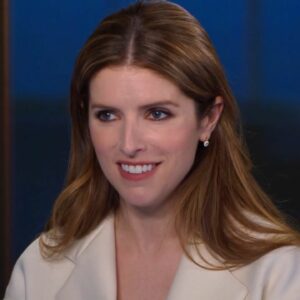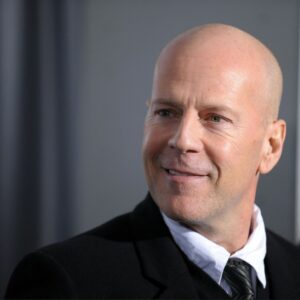Daniel Radcliffe’s career trajectory has been nothing short of extraordinary. From a child star to one of Hollywood’s most versatile actors, Radcliffe’s journey is a testament to his dedication, evolving craft, and commitment to meaningful storytelling. Best known for his iconic role as Harry Potter in the film adaptations of J.K. Rowling’s beloved book series, Radcliffe’s career has spanned over two decades, encompassing a wide range of roles that have continuously challenged his acting ability and public persona. Yet, beyond his accomplishments on screen, Radcliffe has emerged as a powerful advocate for greater diversity and representation in the film industry, emphasizing the importance of stories that reflect the rich tapestry of our global community.
Daniel Radcliffe’s Iconic Role as Harry Potter and Career Evolution
Daniel Radcliffe’s entry into the world of film came at the tender age of 11 when he was cast as Harry Potter in Harry Potter and the Philosopher’s Stone (2001). The series quickly became a global phenomenon, propelling Radcliffe into stardom and making him a household name. Over the course of eight films, Radcliffe embodied the titular role, and his portrayal of the young wizard captivated audiences around the world. The character of Harry Potter, marked by his resilience, courage, and determination, became symbolic of the challenges that young people face in their coming-of-age journeys, making Radcliffe an enduring figure in popular culture.
However, as with many child stars, the challenge for Radcliffe was not just to maintain his success but to diversify his career beyond his association with Harry Potter. Following the conclusion of the series in 2011, Radcliffe made a conscious decision to take on roles that were far from the boy wizard he had portrayed for so many years. His career post-Harry Potter has demonstrated his desire to avoid being typecast. He explored diverse genres, starring in films such as The Woman in Black (2012), a gothic horror film that saw him playing a grieving lawyer; Swiss Army Man (2016), where he played a corpse with unique abilities in a bizarre dark comedy; and Now You See Me 2 (2016), a heist film about illusionists.
Radcliffe’s choice of roles speaks to his artistic growth and willingness to take risks in an industry that often seeks to box actors into predefined roles based on their past successes. Over time, he has not only proven his acting chops but also demonstrated that his versatility extends to various genres and complex character portrayals. As a result, Radcliffe’s star has continued to shine brightly, far beyond the shadow of Harry Potter.
Daniel Radcliffe’s Views on Diversity in Film
As Radcliffe’s career has progressed, so too has his role as an advocate for meaningful social issues. One of the causes that has become increasingly central to his public persona is his support for greater diversity in the film industry. In interviews and public appearances, Radcliffe has consistently emphasized the need for stories that reflect the complexity and diversity of the real world. He argues that films should not only entertain but also serve as a mirror to society, showcasing the experiences of different people from all walks of life.
Radcliffe believes that diversity is a broad concept that goes beyond race or ethnicity. While he acknowledges the importance of racial representation, he also stresses the need for broader inclusion that reflects the full spectrum of human experience. This includes considerations of gender, age, disability, and other marginalized groups. Radcliffe has expressed his frustration with the narrow scope of mainstream cinema, which often focuses on a limited range of stories and characters. He advocates for the portrayal of individuals from all backgrounds, with a particular emphasis on the stories of those who have historically been overlooked in Hollywood productions.
Radcliffe’s commitment to diversity isn’t just about adding representation for representation’s sake; it’s about enriching the stories themselves. He believes that a more diverse cast and crew will ultimately lead to more authentic and compelling narratives that resonate with wider audiences. By expanding the types of stories being told and ensuring that they reflect the world we live in, Radcliffe argues, filmmakers can foster a greater sense of inclusivity and understanding among viewers.
The Importance of Representation in Media
For Radcliffe, representation in media is not merely a symbolic gesture—it is a powerful tool for social change. He believes that when audiences see themselves reflected on screen, it not only validates their experiences but also fosters empathy and connection. In this way, films have the potential to break down stereotypes and challenge preconceived notions, allowing viewers to see the world from perspectives they may never have considered before.
Representation, as Radcliffe points out, is particularly crucial for underrepresented groups. People with disabilities, LGBTQ+ individuals, and those from marginalized racial and ethnic backgrounds often find themselves invisible in mainstream media. When these groups are portrayed, it is often in stereotypical or one-dimensional ways. Radcliffe has been vocal about the need for these groups to be given nuanced, complex roles that go beyond the tokenism or stereotypical roles often assigned to them. For Radcliffe, true representation means seeing diverse characters as multifaceted individuals with depth, personality, and agency—just as anyone else might be portrayed.
Through his advocacy, Radcliffe hopes to inspire change not just on screen but in the hearts and minds of viewers. By seeing diversity portrayed authentically, audiences can broaden their understanding of the world and develop greater empathy for those whose lives may differ from their own. In a time when global connectedness is ever-growing, Radcliffe underscores how vital it is for our stories to reflect this interconnectedness.
The Need for Change Behind the Scenes
While Radcliffe has been a vocal advocate for greater representation on screen, he also acknowledges that true change in the film industry requires diversity behind the scenes as well. As much as on-screen representation is important, the makeup of the teams responsible for creating films—producers, directors, screenwriters, and other key decision-makers—also needs to reflect the world’s diversity. Without diverse voices in these positions, the stories being told will remain limited, often only reflecting the perspectives of a few dominant groups.
Radcliffe has pointed to the importance of hiring diverse filmmakers and empowering underrepresented voices in the creative process. Diverse voices in writing rooms, director’s chairs, and executive positions are essential in ensuring that films tell authentic stories that speak to a broad audience. Radcliffe believes that the film industry must continue to push for inclusivity not just in front of the camera, but also in the boardrooms, studios, and behind-the-scenes processes that shape the industry.
One of the challenges Radcliffe identifies is the structural inequalities that exist within Hollywood. The industry, he argues, has historically been dominated by a few powerful groups, and shifting the balance of power will require intentional, sustained efforts. It is not enough to simply cast more diverse actors; the industry must also create pathways for diverse creators to rise to leadership roles and to have their stories heard.
The Future of Film: A Call for Inclusivity
Looking to the future of cinema, Radcliffe is hopeful that the ongoing conversation about diversity and representation will lead to meaningful change. He believes that we are at a pivotal moment in the film industry, where audiences are demanding more inclusive, diverse content, and filmmakers are responding. For Radcliffe, this is a long-overdue shift that reflects broader societal changes toward inclusivity and equality.
Radcliffe encourages filmmakers to embrace the full range of human experiences and to create stories that go beyond the stereotypes that have often dominated cinema. He advocates for films that explore the complexities of life in all its forms—films that are as varied and diverse as the people who watch them. Radcliffe emphasizes that inclusivity isn’t just about meeting quotas or ticking boxes; it’s about telling stories that reflect the richness and diversity of the world, and about empowering those whose voices have been marginalized for far too long.
For Radcliffe, the future of film is one where all stories, regardless of background, are given space to thrive. This includes the stories of people from different races, genders, and cultural backgrounds, as well as those with disabilities and from LGBTQ+ communities. The industry’s role, Radcliffe believes, is to support these stories and to create an environment where everyone feels seen and heard.
Conclusion: A Call to Action for Hollywood
Daniel Radcliffe’s career has been marked by versatility and a willingness to challenge the expectations placed upon him. In recent years, he has used his platform to advocate for greater diversity and representation in the film industry, calling for a future where all voices are heard and valued. His belief in the power of storytelling to change perceptions and build empathy is central to his vision for a more inclusive Hollywood.
Radcliffe’s call to action is clear: create an environment where all stories—no matter the background of those telling them—are given the space to thrive. He encourages filmmakers to embrace diversity not only in their casts but also in their crews, production teams, and creative processes. By doing so, Hollywood can move beyond the limitations of outdated stereotypes and offer audiences a fuller, more authentic reflection of the world they inhabit.
As Radcliffe continues to evolve as an actor and advocate, his message remains powerful and timely: the future of film lies in its ability to reflect the diverse, multifaceted world in which we live. In embracing diversity and inclusivity, the film industry can create a more compassionate, understanding, and truly global form of storytelling.





